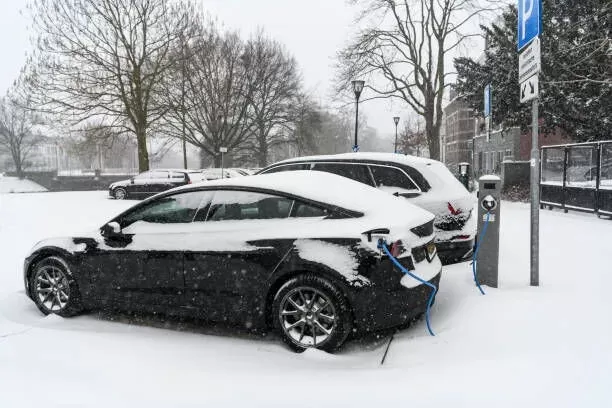Notifications

5 minutes, 21 seconds
-0 Views 0 Comments 0 Likes 0 Reviews

Maximizing Your EV’s Range in Winter: Smart Charging and Driving Tips for Cold Weather
Topper Company, a professional EV charger manufacturer in China, delivers dependable electric vehicle charging stations and comprehensive solutions.
As electric vehicles (EVs) and EV chargers become more popular, many drivers are learning about the unique challenges of operating EVs in colder climates. Winter can significantly affect an EV’s range due to reduced battery efficiency, increased power demand for heating, and difficult road conditions. Fortunately, with the right strategies—especially smart use of your EV charger—you can optimize performance and enjoy a smooth winter driving experience.
EV chargers play a crucial role in winter readiness. Charging times may be longer in cold temperatures, and the efficiency of battery charging can be affected. Proper charger placement (e.g., in a garage or sheltered space), timely use, and features like scheduled charging or preconditioning can help mitigate the effects of cold weather.
One of the easiest and most effective ways to extend your EV’s range during winter is by preconditioning. This means heating your car and its battery while it’s still plugged into a power source—typically your home charging station.
Most modern EVs allow you to schedule preconditioning via a mobile app or through the dashboard. Doing this helps:
Warm the cabin and battery using external power (not the battery itself)
Improve battery efficiency by bringing it to optimal temperature
Reduce the energy needed for heating once you're on the road
Parking your EV in a garage, even an unheated one, can help preserve range. Temperatures inside garages are generally higher than outdoors, slowing battery drain and improving efficiency.
If your garage is heated, the benefits are even greater:
Faster charging (cold batteries charge slower)
Less battery stress
Reduced preconditioning time
Heating the entire cabin can quickly deplete your battery. Instead, use energy-efficient features like:
Heated seats
Heated steering wheel
Zoned climate control (turn off heat in empty seats)
These localized heating options consume less energy while keeping you warm, helping you conserve range.
Driving style significantly affects your EV’s efficiency. In winter, practice:
Gentle acceleration and braking
Smooth, steady driving
Use of regenerative braking (to recapture energy)
Most EVs also have an Eco Mode to help conserve energy by limiting acceleration and optimizing heating and power usage.
Avoid towing heavy loads or driving with unnecessary weight during winter, as this increases energy consumption.
Always have your charging cable on hand during winter trips. You might encounter:
Delays due to weather
Detours
Longer-than-expected drives
Having your cable ensures you're ready to charge at any public station. If your EV has a frunk (front trunk), it’s a convenient storage spot for the cable.
Winter tires are designed to:
Stay flexible in cold temperatures
Provide better traction in snow and ice
Improve braking and handling
Better traction means the car doesn’t need as much energy to move, preserving battery life. Also, check tire pressure regularly—cold weather reduces pressure, increasing rolling resistance and reducing efficiency.
Winter poses unique challenges for EV owners, but with the right preparation, you can maintain range and performance even in freezing temperatures. Key strategies include:
Preconditioning your vehicle while plugged in
Parking in a garage
Using localized heating
Driving efficiently
Carrying a charging cable
Equipping your EV with winter tires
By adopting these practices, you’ll enjoy safe, reliable, and efficient winter driving—and get the most out of your EV no matter how cold it gets.Know more about Google SEO Directory
China EV Chargers EV Charger Manufacturer EV Charging Solutions

